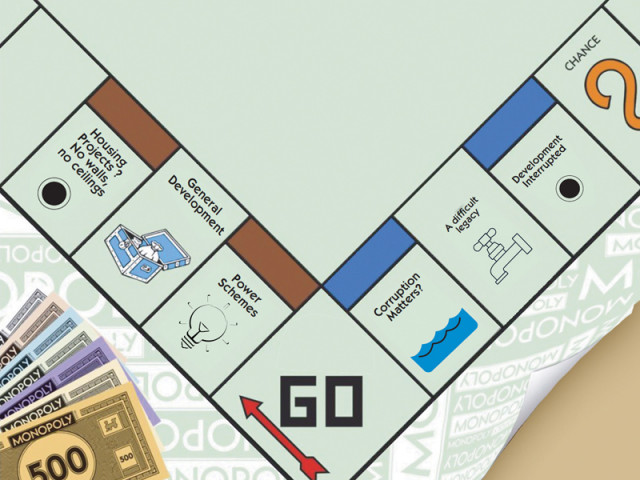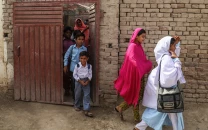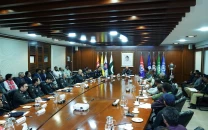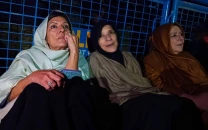What happened to those projects?: Unfinished business of 7 successive governments
Part of trillions reserved for development projects went either into black holes of corruption or are stuck in limbo.

Part of trillions reserved for development projects went either into black holes of corruption or are stuck in limbo.
As none of the regimes came into power for a consecutive second term, many of these projects remain incomplete, in limbo.
Discretionary Programmes – Beginning to an end
The phenomenon of using taxpayers’ money for luring voters reached its peak in the last regime when billions of rupees were spent by former prime ministers Yousaf Raza Gilani and Raja Pervaiz Ashraf by using their discretionary powers.
Muhammad Khan Junejo became prime minister in 1985. Despite a limited total federal development spending of less than Rs30 billion, a major chunk of which was used to finance schemes initiated during General Zia’s martial law, Junejo initiated useful development programmes.
Yet, while Junejo launched a five-point agenda to overhaul the economy, bureaucracy and curtail rampant corruption. He announced the Prime Minister’s Special Local Development Programme. For the first year the allocated amount was Rs1.379 billion.
After Junejo every government increased this sort of discretionary spending. Nawaz Sharif did it in the name of Tameer-e-Watan Programme, Musharraf under the banner of Khushaal Pakistan Programme and the Pakistan Peoples Party PPP government called it the Peoples Works Programme. The pool gradually swelled to Rs5 billion in Nawaz Sharif’s era but the last political regime spent a whopping Rs39 billion under the PM’s discretionary spending.
Housing Projects – No walls, no ceilings
Muhammad Khan Junejo launched the ‘Apni Basti’ project in 1987 to build 150,000 housing units, but eventually only 35,000 houses were constructed. The scheme had too many flaws, including unrealistic pricing, and unsuitable locations where there was no provision for water, power and gas. Eventually, people took away the door and window frames of the houses as well as the bricks.
Nawaz Sharif too launched the ‘Mera Ghar’ Scheme, the biggest public sector housing scheme involving an expenditure of billions of rupees in 3 years. Under this scheme the government proposed the construction of over 500,000 houses for low income groups over the next three years on 20,000 acres of state land, but the desired objectives could not be achieved. The late Benazir Bhutto too launched ‘New Islamabad City’ in 1996 but this too faded away with huge public money going down the drain.
Development Interrupted
In a majority of cases, particularly in the case of the outgoing PPP-coalition government, the projects were never completed on time, neither at the estimated cost, resulting into cost overruns besides loss of envisaged economic benefits due to delay in execution of the schemes.
Lyari Expressway, a project of General Musharraf, started with Rs5.1 billion but remains incomplete due to a turf war between MQM and ANP.
Most of Rs1.3 trillion federal public spending in the outgoing PPP-coalition govt was spent on paying salaries of the project staff and buying vehicles. The hallmark of this scheme was that the government was spending on gas and electricity, even though the two amenities were not available.
Corruption Matters?
The Neelum-Jhelum hydro electric project, which was launched at an estimated cost of Rs84 billion was started in Musharraf’s time, but the revised cost has surged to Rs321.4 billion, partly because of a change in design and largely due to delay in execution and corruption of the PPP government.
Questions have been raised over the Benazir Income Support Programme, the flagship scheme of the last regime. Roughly Rs180 billion have been distributed under this head among ‘identified’ poor of the country. Experts say this programme might benefit the PPP government in rural areas, particularly in Southern Punjab and Interior Sindh, where computerised national identity cards were issued to women for the first time.
General Development
The biggest development boom came in General Pervez Musharraf’s era as dollars poured in due to Islamabad’s willingness to dance to the tunes of western powers. As many as 34,251 development schemes were launched during the period from 1999-2007, including over 100 mega development projects. Over Rs1.1 trillion were spent in 8 years. Despite having enough fiscal space, General Musharraf too could not complete all the schemes. Many are still ongoing while over 2,000 were dropped by the PPP-led coalition government, quietly.
General Musharraf has the initiation of many projects to his credit like the Diamer Bhasha Dam and Gwadar Port with a revised cost of Rs16.7 billion. He launched the 653 km long Makran Coastal Highway at an estimated cost of Rs11.5 billion that greatly improved road infrastructure in Balochistan. In February 2002, he launched Pindi Bhattian-Faisalabad Motorway (M-3) with an estimated cost of Rs5.1 billion.
Power Schemes
Since 1991, it appeared that every government gave top priority to rehabilitation and addition of diesel engine locomotives, initially launched at an estimated cost of Rs2.8 billion. This scheme is a classic example of corruption under the garb of development. Benazir Bhutto introduced Independent Power Producers (IPP) policy that allowed foreign companies to invest in the country’s power sector. The policy, though controversial, is fulfilling over one-third of the country’s electricity needs.
In 1995, Benazir Bhutto also started Ghazi Borotha Hydropower Project with an estimated cost of Rs67.8 billion. Mian Nawaz Sharif rocked the boat when he launched the Lahore-Islamabad Motorway (M-2) project, first of its kind in South Asia, in September 1992 with an estimated cost of Rs21.8 billion. But actual spending remained at Rs39.95 billion - 84% higher than the original estimates.
Money spent on development schemes
1988-1999
four political governments of Benazir Bhutto and Nawaz Sharif spent Rs568 billion, Rs50 billion per annum on an average.
1999-2007
Rs1.1 trillion spent in General Musharraf’s era.
2008-2013
the PPP-led coalition government spent Rs1.3 trillion.
A difficult legacy
The PPP government has left behind projects of over Rs3 trillion, which also include schemes started in previous regimes. The size of the outlay will be a big nuisance for any new government.
Development experts advocate that the Parliament should bring an end to the practice of discretionary spending by PM and approving development schemes on recommendations of parliamentarians. This is a job to be performed at local government level. They argue that except for projects of strategic nature, the future governments should end the use of taxpayers money for political gains.
Published in The Express Tribune, April 15th, 2013.



















COMMENTS
Comments are moderated and generally will be posted if they are on-topic and not abusive.
For more information, please see our Comments FAQ